SELF-CULTIVATION¶
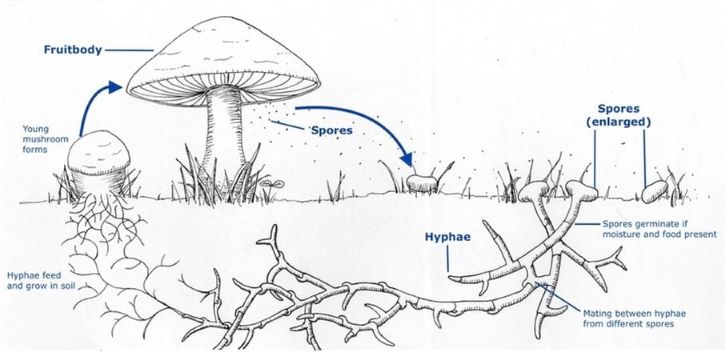
1º Step: Spore Extraction¶
Spore collection techniques vary, according to the shape, size, and type of the mushroom candidate. For gilled mushrooms, the cap can be severed from the stem, and laid, gills down, on top of clean typing paper, glass, or similar surface.
After 12 hours, most mushrooms will have released thousand of spores, sporeprint. They should be stored in a dark, cool location, low in humidity and free from temperature fluctuation.
Using fresh specimens, a more efficient method of spore collection is recommended. This method calls for the immersion of the mushroom in water to create a spore-mass slurry. Submerged them in a 5-gallon bucket of water.

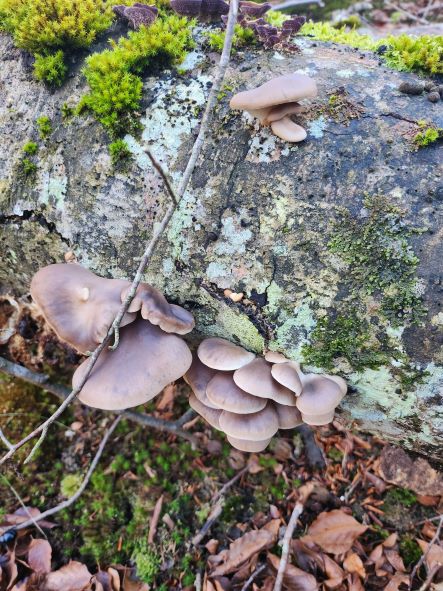
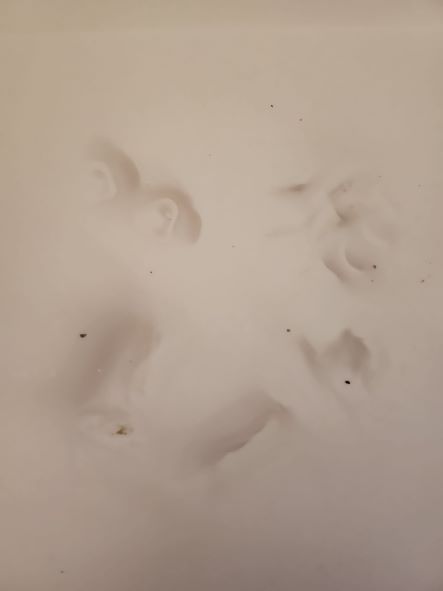
First failed attempts


I think that I have not been able to extract the spores in this first attempt because to keep the mushrooms in good condition I put them in the freezer.
Learning: extract the spores before freezing the mushrooms.
2º Step: Inoculation¶
Spawn run spans the period of time when the mycelium is colonizing the substrate. The amount of spawn inoculated into the substrate can greatly affect the duration of colonization, and therefore, the time to fruiting. 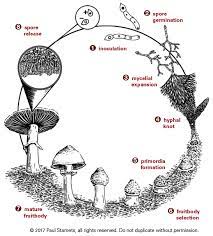
-
Moisture: Substrate moisture should be between 60 and 75%. Moisture contents below 40% promote slow and wispy mycelial growth. The water content of straw at inoculation is nearly 75%, precipitously dropping after the first flush to the 60% range, and continuing to steadily decline through the remainder of the cropping cycle. Retard the loss of substrate moisture by maintining high humidity during spawn run.
-
Air Exchange: Mushroom mycelium is remarkable in its tolerance for carbon dioxide. Some Oyster mushrooms´growth rates peak at 20% carbon dioxide, or 200,000 ppm. The best levels vary with the strain, and whether one is working with pasteurized or sterilized substrates. To reduce carbon dioxide, fresh outside air is introduced. Consequently, several other phenomena occur: Evaporation is increased; humidity drops; temperature changes; and the number of contaminant particles entering the growing room rises as air exhanges are increased.
-
Temperature: Incubation temperature runs higher than the temperature for primordia formation. Internal temperatures should not exceed 95ºF (35ºC).
-
Lighting: Ligth is especially harmful when intensities exceed 10,000 lux. The mycelial mat only becomes photosensitive after it has coincident with full colonization, and after carbon dioxide evolution has steeply declined.
Hygiene and Sterilization measures¶
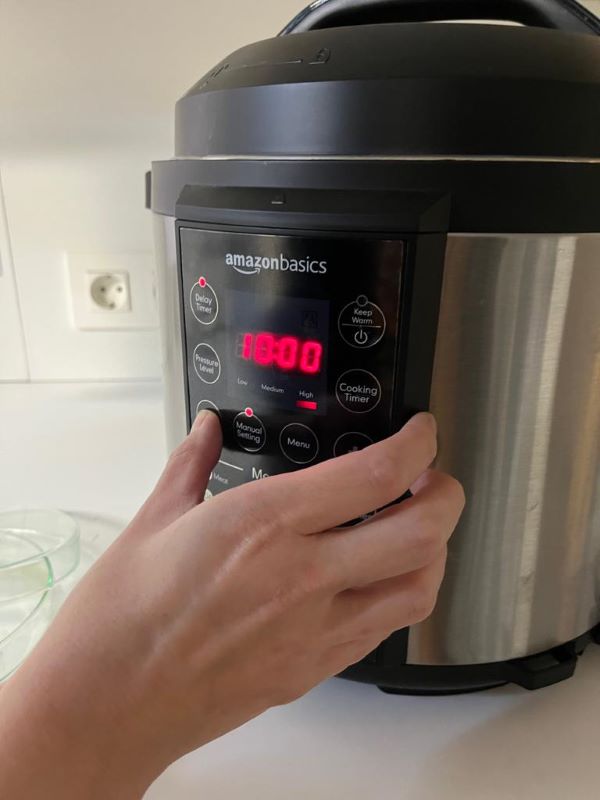
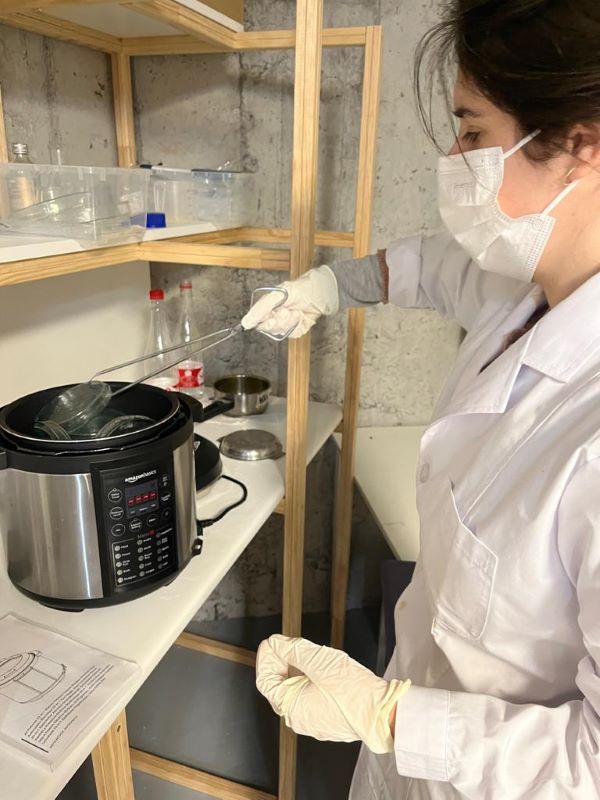

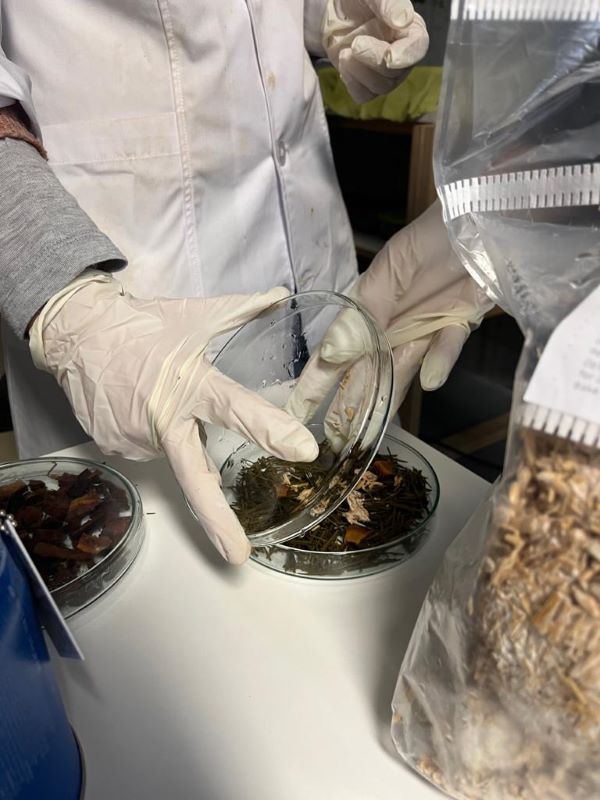
* Pressure cooker
* Nutrient agar
* Electric Stove
* Petri dishes
* Camping gas + lighter
* Parafil tape
* Scalpel
* Gloves
* Lab Coat
* Alcohol
* Sterilize the textiles, petri dishes and growing medium in the pressure cooker.
* Sterilize working area with ethanol and the camping gas.
* Tag your petri dishes and pour growing medium.
* Inoculate the petri dishes with the different ingredients.
* Pine leaves and pine bark previously pasteurized in hot water for one hour.
* Wearing gloves and a lab coat si safer
* Clean your hands after with ethanol and soap.
* No food or drinks around.
Lactarious Deliciosus¶
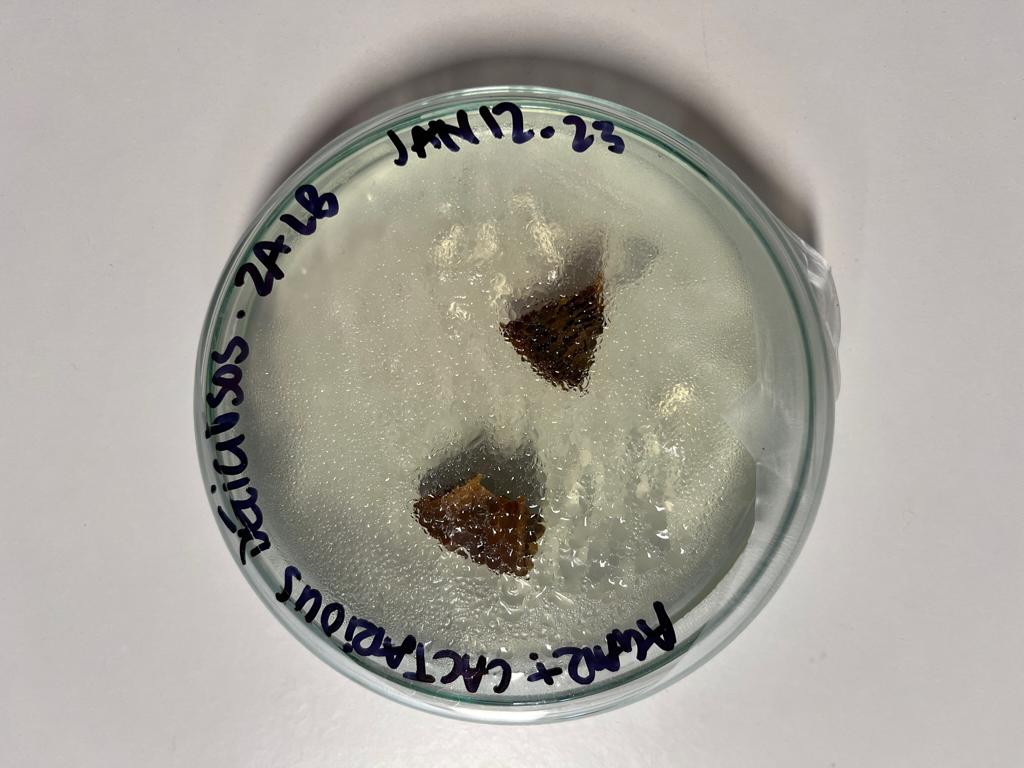


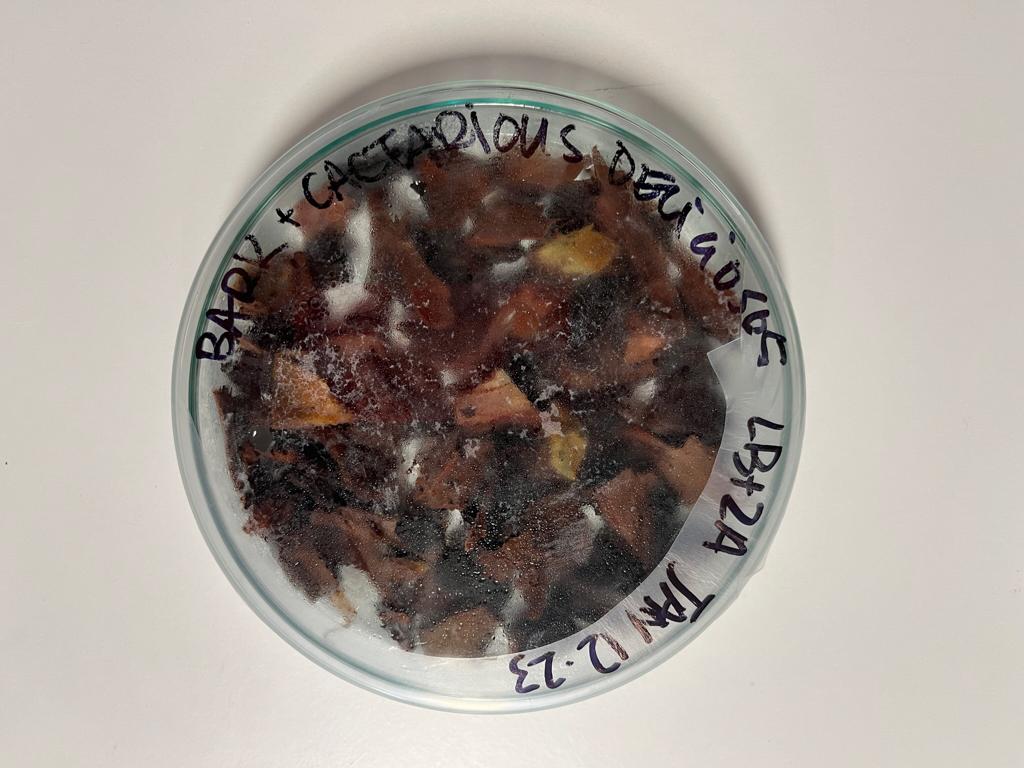


| Result | Main Ingredient | Substrate | Temperature | Humidity | Day |
|---|---|---|---|---|---|
 |
Lactarious Deliciosus | Agar | 24ºC | 50% ambient humidity | Day 1 |
 |
Lactarious Deliciosus | Agar + Mycelium | 24ºC | 50% ambient humidity | Day 1 |
 |
Lactarious Deliciosus | pine leaf + Pine bark | 24ºC | 50% ambient humidity | Day 1 |
 |
Lactarious Deliciosus | Pine Bark | 24ºC | 50% ambient humidity | Day 1 |
 |
Lactarious Deliciosus | Pine leaf + Mycelium | 24ºC | 50% ambient humidity | Day 1 |
 |
Lactarious Deliciosus | Pine leaf | 24ºC | 50% ambient humidity | Day 1 |
Pleurotus Ostreatus¶

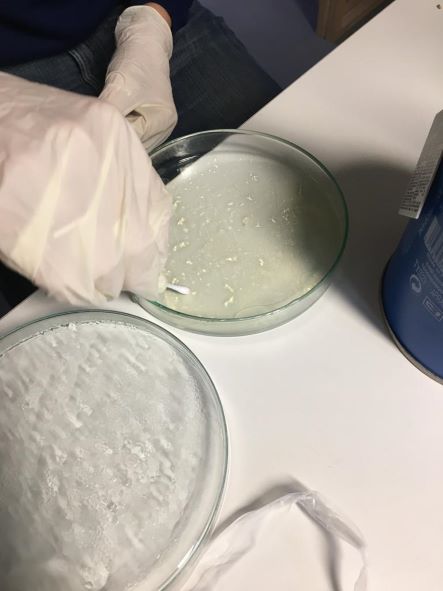
Mycelium¶
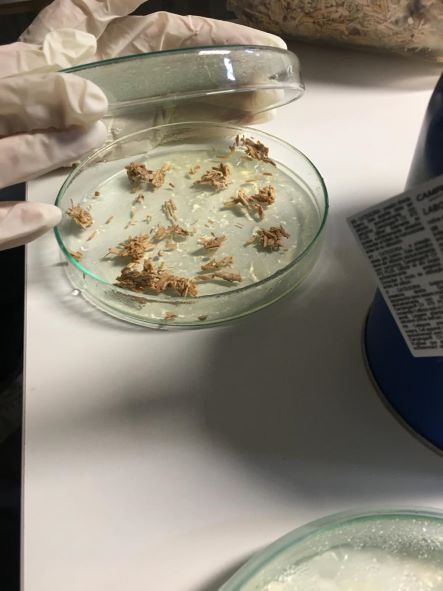
Evolution: Day 5
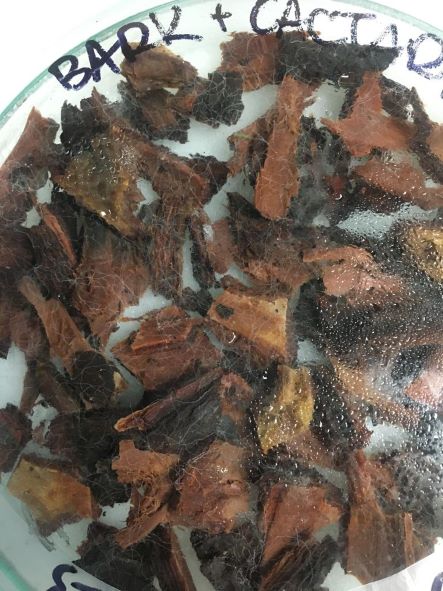

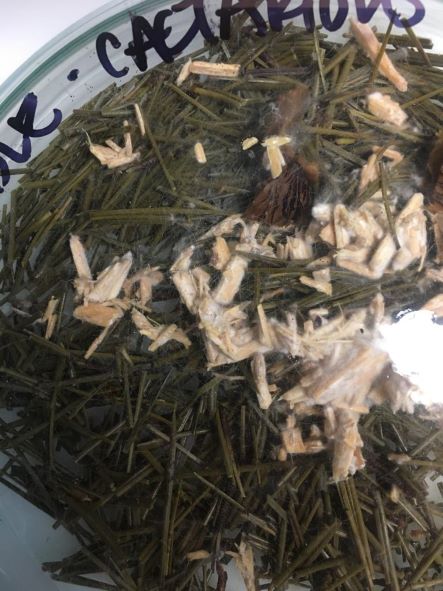
Evolution: Day 15
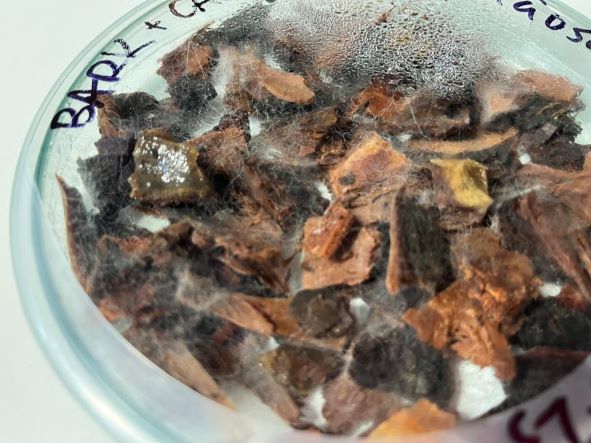
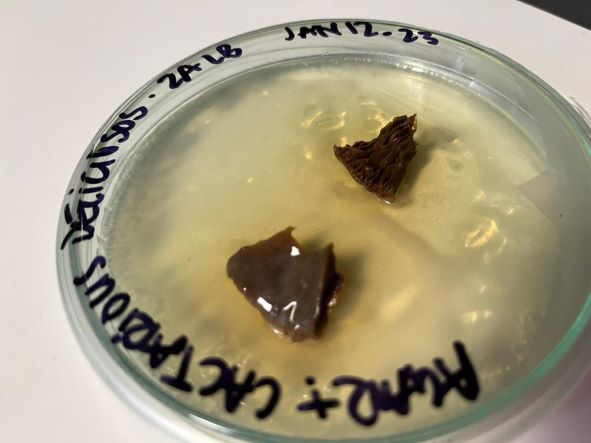
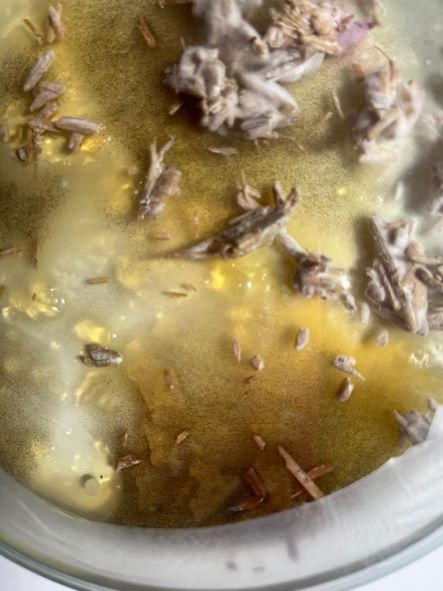
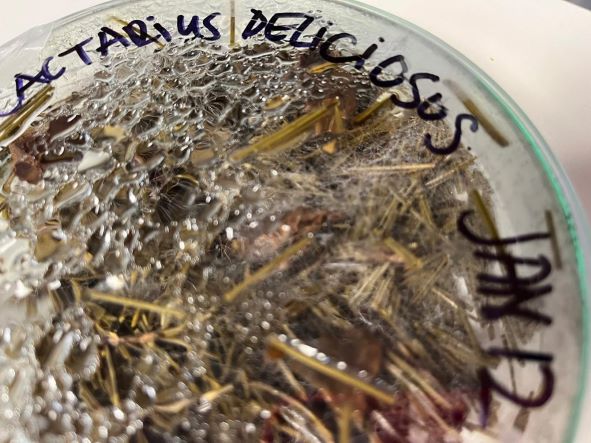
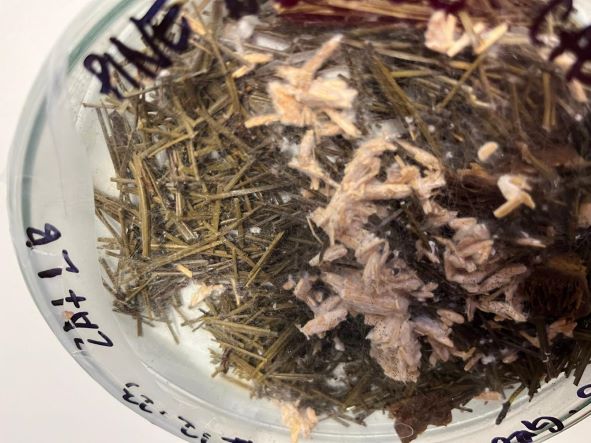
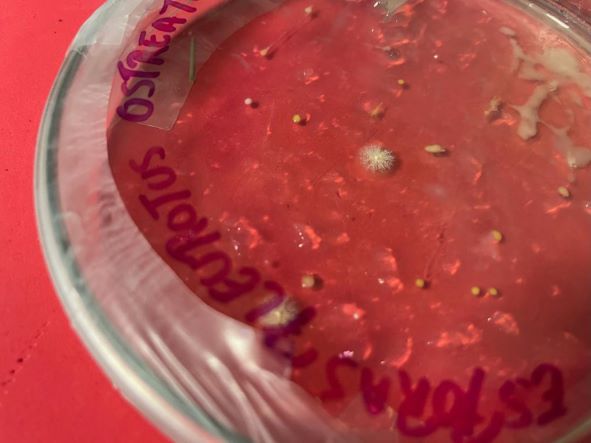
3º Step: Primordia Formation¶
The period of primordia formation is one of the most critical phases in the mushroom cultivation process. The duration can be as short as 2 days as long as 14.
The four major environmental factors operative in an initiation strategy are moisture, air exchange, temperature and light.
-
Moisture: High humidity 95-100%. Once primordia form, a gradual reduction of humidity from 100% to 90-95% usually is beneficial. Humidity should be measured in at least three locations in the free air spaces directly above the mycelium-permeated substrate.
-
Air Exchange: CO2 levels should be below 1,000 ppm, ideally below 500 ppm for maximum mushroom formation.
-
Temperature: Air temperature is adjusted upward or downwards to affect the desired change. When air temperature is changed, a lag time follows, often for 24 to 72 hours, before the substrate temperature acclimates to the new level. In most cases, the critical temperature plateau occurs within 2-4 inches of the surface, the region supporting the creation of primordia.
-
Lighting: Ligth controls stem elongation and cap development. Ideal ligth conditions vary with each species and strain. The fluorecescent ligths used in indoor facilities do not inhibit mycelial growth, and in some circumstances may stimulate early primordia formation. For most species, light levels between 50 and 1,000 lux and 380and 480 nanometers seem most stimulatory to primordia formation.
4º Step: Fruitbody Development¶
-
Moisture: While relative humidity approaches 100% during primordia formation, it should be lowered to levels whereby a constant rate of evaporation is drawn from the fuitbodies. The crop should be sprayed several times a day, as long as the mushrooms, the substrate, ot the air soon reabsorbs the excess water.
-
Air Exchange: Air exchange and turbulence are managed for maximum benefit of the mushrooms, in terms of reducing carbon dioxide levels, elevating oxygen concentartion, and effecting the constant evaporation of moisture from the surfaces of the maturing mushrooms.
-
Temperature: Typically after primordia formation, temperature controls the speed of development of the fruitbody. Naturally, warmer temperatures result in faster growth while colder temperatures result in faster growth while colder temperatures slow development.
*Lighting: Without adequate ligth, stem elongation and malformation of the cap occurs. Also strong ligth alters the pigment of the developing mushrooms. This ligth-sensitive response is also affected by temperature.
5º Step: Croppin Cycle¶
The timing of crops are strain and process dependent. Approximately 1 to 2 weeks separate the end of the first flush to the beginning of the second. A period of dormancy is required between crops so nutrients can be accumulated as the mycelium prepares for the nest production cycle.
Note: I will continue trying self-cultivation with other techniques